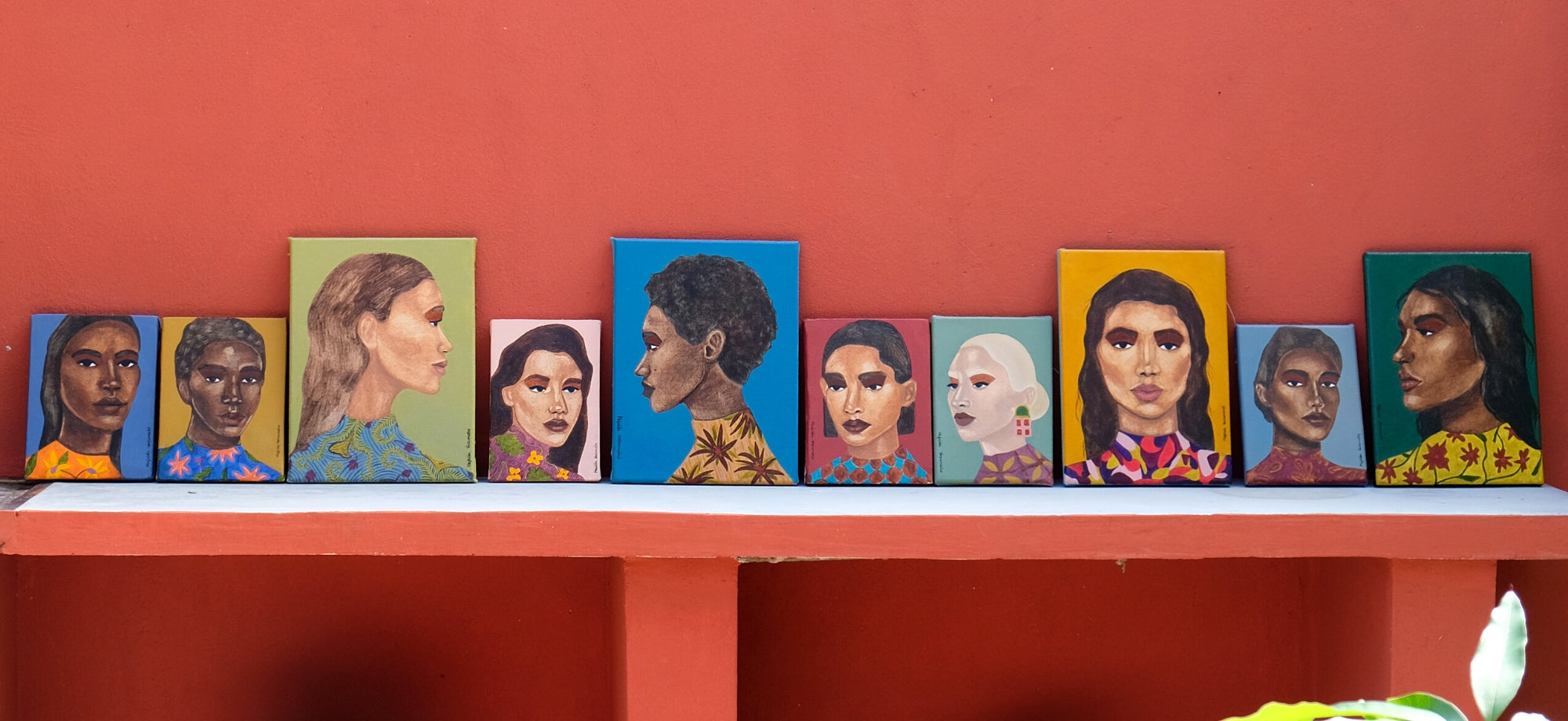
AUTHOR AND ARTS CRITIC
99/ Colour Me In: What I Look For In A Palette by Chloë Ashby
We’re excited to share the second edition of journals by author and arts critic Chloë Ashby. Here, the writer behind Colours of Art: The Story of Art in 80 Palettes, takes us on a trip through art history exploring the power of colour in art.
From prehistoric times to the present day, artists around the world have used their palettes to describe, symbolise, and elucidate. They’ve chosen certain hues to tell stories, and packed their pigments with social, political and religious references. Chloë whisks us through a handful of her favourite examples, from Edgar Degas’ hot and fiery Combing the Hair to František Kupka’s The Yellow Scale.
Read about what Chloë looks for in a palette and discover our Pantone Edits through her curation of Partnership Editions artworks.
 |
Can you imagine a world without colour? Black-and-white photographs and films give us a rough idea, but our kaleidoscopic surroundings mean that blue, yellow, red, etc. are constant companions. They’re stitched into our clothes, printed in our books, displayed on our screens. They’re at their most vibrant during waking hours, but they’re also there, a little fuzzy around the edges, when we close our eyes at the end of the day. As a child, lying in bed in the dark, waiting to fall asleep, I remember marvelling at the flashes swirling across the underside of my lids. No matter how tight I squeezed my eyes shut, they wouldn’t fade.
Art helps us to appreciate and understand colour. From prehistoric times to the present day, artists around the world have used their palettes to describe, symbolise, elucidate. They’ve chosen certain hues to tell stories, and packed their pigments with social, political and religious references. Colour in art can be realistic, as in the standard morning spreads in 17th-century Netherlands painted by the great Amsterdam artist Clara Peeters, but it can also be idealised and fanciful – dashed with gilded accents like the decorative canvases of Sandro Botticelli. It can be dulled or saturated to express an atmosphere, an emotion, a mood. It can be pared back to the point of erasure (never underestimate the subtly nuanced colour in Agnes Martin’s seemingly blank spaces).

When I think of colour in art, there are a couple of works that always spring to mind: Edgar Degas’ hot and fiery Combing the Hair (1896) and František Kupka’s The Yellow Scale (c. 1907). In losing themselves in variations of one colour, both artists crank up the claustrophobic nature of the scenes, which show, respectively, a maid untangling the tresses of her mistress and Kupka slumped in a wicker chair. Each bright and cheery canvas has a dark and tingly undercurrent. In the 19th century, it was scandalous for a woman to brush her hair in public, and Degas’ orange-red palette is associated with a range of emotions: love, lust, violence and shame. In Kupka’s self-portrait, the sickly green streaks on the artist’s cheeks suggest a certain displeasure – a displeasure that sits in stark contrast with the otherwise sunny picture.

Colour is a language like any other, and I like it best when it tells me something about the artist, time, place. Readers of my first novel, Wet Paint, will know by now that I have a thing for Édouard Manet, whose spellbinding portrait of his fellow artist Berthe Morisot, who would later become his sister-in-law, is as much a study in tone as it is a study in character. The colour black was considered best avoided by the Impressionists, with whom Manet was loosely associated, but here it takes centre stage, covering more than half the canvas. Portrayed in mourning at her father’s funeral, Morisot is statuesque, in a black cloak and matching hat, with wide black ribbons falling loose alongside her brown hair. On the right-hand side is a dark strip of shadow, slowly inching across the pearly backdrop, glowing a silvery yellow.

Why limit yourself to one colour when you have an entire spectrum at your fingertips? In Ice Cream 1 (1964), Evelyne Axell used a rainbowed array to evoke a sense of female freedom and the sexual revolution of the 1960s. The monochrome face of a beautiful woman is juxtaposed with cherry-red hair and appears to float free in an abstract sea of yellow, blue and green spirals. There’s no sign of the woman’s body – just her hand, wrapped around a pale beige cone. As she pushes out her tongue to lick her melting ice cream – a neon blob of strawberry pink and mint green – she closes her eyes, losing herself in the technicolour sweetness.

What’s my favourite colour? I don’t have an easy answer. And even if I did – let’s say, I go for green – I could be talking about apple-green, leaf-green, lime-green. Emerald, olive, sage. It’s hard to imagine a world without colour, and it’s also hard to imagine a world in which colour is static, fixed. Colour in life – as in art – is rich and vital, infinitely varied.
FOLLOW CHLOË
@chloelashby
www.chloeashby.com
Chloë Ashby is an author and arts critic who has written for publications such as The Times, TLS, Guardian, Spectator and frieze. She is the author of Colours of Art: The Story of Art in 80 Palettes, a Times best book of 2022. Her debut novel, Wet Paint, was published in April 2022, and her second novel, Second Self, in July 2023.
